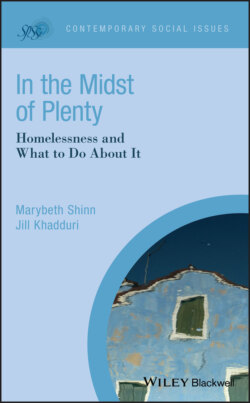Читать книгу In the Midst of Plenty - Marybeth Shinn - Страница 23
The Importance of Time Frames
ОглавлениеThe proportion of the population that becomes homeless over an extended period such as 5 years or a lifetime is vastly larger than the proportion homeless on any given night. As national telephone surveys and examination of shelter records for individuals and families have shown, most people who become homeless do not remain homeless forever. As the estimates of numbers of chronically homeless people show, only about a quarter of individuals and 5% of families remain homeless for as long as a year.
In this, homelessness differs from many other social statuses. The proportion of people in the United States who are immigrants does not vary much over a day or a year or a decade. Some people arrive, others leave or die, there are trends over time, but once an immigrant, always an immigrant. Homelessness is more like unemployment—many people experience it briefly, some have repeated bouts, some despair of finding jobs and leave the labor force entirely.
For homelessness, as for unemployment, it makes sense to ask how many people are in this status on a given day—what epidemiologists call point prevalence, to understand something about the need for services and to monitor trends. But the one‐night estimate serves to minimize the scope of the problem. To truly understand the vastly larger number of people afflicted, estimates over a longer span of 5 years or a lifetime—what epidemiologists call period prevalence—are also important. Surveys of people living in ordinary housing miss anyone currently homeless, so they are not very good at estimating the effects of recent changes in policies to address homelessness. However, surveys do provide a window on the magnitude of the problem and the resources that will be needed to end it.
Phrases like “the homeless” suggest to the casual reader that people who are homeless are a species apart—just as the tiger does not change its stripes, “the homeless” will remain so—and maybe there is little anyone can do about it. Understanding that people move into and back out of homelessness provides more points of intervention. What policies and practices can prevent people from becoming homeless? What services can speed their exits and prevent them from returning to that state? The last four chapters of this book address these questions.
